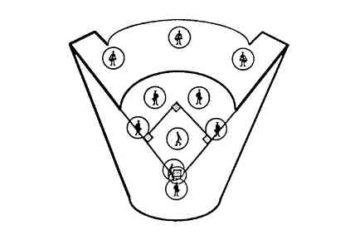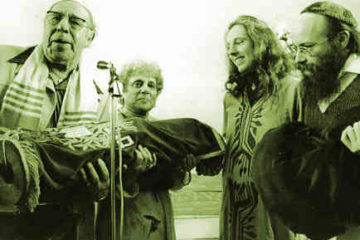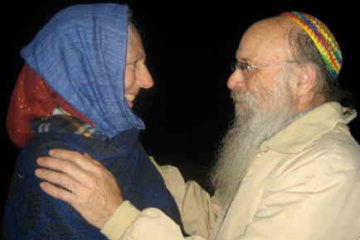“I always feel it’s not wise to violate rules unless you know how to observe them.”
– T.S. Eliot, in an interview with Donald Hall
Modern poetry, beginning with the dithyrambic lines of Blake’s prophetic books – or even earlier, with the biblical cadences of Christopher Smart – and stretching forward to Whitman and our own Allen Ginsberg, exhibits a tensile strength concerned with throwing off the chains of superfluous outer control. Charles Olson, the poet and theoretician, draws a useful distinction between “open forms” and “closed forms,” taking the outworn debate between advocates of conventional and free verse to a more subtle and sophisticated level of discourse. To paraphrase his main thesis, a poem is an emotion or idea in search of an appropriate form for the upwelling that wants to utter itself in articulate speech and melody but not be limited by received forms or even by novel permutations they might assume.
I think that much of this urge for original expression that is not “fixed”*
(*”What is ‘fixed’? Whatever blocks the will to make it new.” – Hanan Sills, referencing a commentary to Pirke Avot) or imitative is part of the movement for Jewish renewal-which is present in every generation – and that we, in particular, can trace to the late sixties Havurat Shalom in Cambridge, Massachusetts, and the House of Love and Prayer in San Francisco. Even these complementary entities had antecedents in unlikely places, such as the kibutz of Reb Nachman (the annual Rosh HaShanah gathering in Uman), the type of setting where he invented the allegorical fairy tale and transmitted his rediscovery of a Jewish meditation tradition of spontaneous personal prayer, hitbodidut.
The Aquarian Minyan, from its very beginnings, encouraged and relied upon an ecstatic kind of worship scarcely (and often invisibly) supported by the skeletal structure of the traditional service. Its discrete segments – of P’sukei d’Zimra (Songs of Praise), Borukhu (Call to Prayer), Kriyat Shema (Declaration of Faith), Amidah (silent prayer), Torah reading (revelation and interpretation), Healing and Blessing circles-helped to focus group energy and elicit improvised and animated overflow.
As knowledge grew of the received liturgical forms, so did our attempts to appropriate them for our own purposes. I think there has always been a wide range of responses to traditional Jewish liturgy within our community. First, of course, there is respect for its antiquity and authenticity. Then there is resistance to its authority and perceived hierarchical assumptions and outer-directed language. People don’t want to be constrained, overly directed, or forced to accept a world view and value system they have not thought through. That is why we needed new translations from the outset – and attempts in that direction by Reb Zalman and Burt Jacobson and, later, David Wolfe-Blank and Miriam Stampfer, were eagerly embraced. The freshness of thought, the reframing of images, the evocation of universalism and inclusion, and the flashes of humor in these translations were greatly appreciated.
Like new poetry working on the national consciousness, new translations, incorporating new interpretations and levels of understanding, acted as leavening agents in the soul of our community. The feelings of liberation these translations fostered enhanced our connection to and appreciation of Judaism on the one hand and the Divine in our lives on the other. The two were linked and were experienced as part of one continuum.
Likewise, the innovations in ritual freed us to rediscover the original meanings of Shabbat and Holy Day celebrations and enabled a creative group process to occur. Participants in worship who have input into the form or style are empowered participants. They give more, so they expect more. They make a commitment, and so they have a stake in the outcome, for themselves personally and for the group as a whole.
This empowerment builds community. Even if only a few members are overtly leading, they must be tuned into the needs of the congregants to succeed in their task. Even if the many feel unable as yet to take a leading role, they can imagine themselves getting ready to step up and do so – and will at least know that their reactions and comments matter to the leaders and to the collective. This sense of belonging inspires learning, increases competence, and encourages interdependence and mutual respect.
But just as in poetry, or in any of the arts, new forms can become static and imitative of past experiences, rather than creatively transforming them. Therefore, the emergence of a Jewish renewal orthodoxy is not an oxymoron – it is a real (and scary) possibility. This is not to say anything against orthodoxy, which possesses a vitality and staying power we would do well to examine. In fact, I would recommend any devotee or acolyte of Jewish renewal to become well acquainted with and even, if so inclined, to master the forms of traditional Jewish liturgy and learning-probably a lifetime quest – just as I would encourage an aspiring poet to learn how to write couplets, sonnets, and blank verse. Nor do I mean to criticize Orthodox Jewish renewal, an entirely legitimate phenomenon, though one with problems of its own in regard to gender-based exclusion and archaic G-d language. But for many of us, the rectitude of habit, even though it is often attractive and necessary, does not always produce the desired intensity of practice. For that, the teachings of our teachers about kavanah (intentionality) ought to be consulted. Through it, closed forms are enlivened and open forms given integrity and coherence.
One essential element which, because of its importance, I have left for last, is nusach, which may be defined as the tonality of a worship service, inclusive of melody, rhythm, phrasing, diction, and mood. The infusion of niggunim (wordless melodies), whether of ancient or modern provenance, into our service, has often provided the uplift needed to take us beyond a merely conceptual approach. The same is true of some of the inspired and well-crafted songs composed by our bridges between two worlds: Shlomo Carlebach and younger composers such as Moshe Shur, The Diaspora Yeshiva Band, Michael Shapiro, David Zeller, Hanna Tiferet Siegel, Linda Hirschhorn, Shefa Gold, Ya’akov Gabriel, Aryeh Hirschfield, Yitz Hankin, and others too numerous to mention (no one should be offended if omitted). This aspect represents the true creative heartbeat of our tradition, and the flow it mediates is apt to appear in any of us at any time. Song and spirit, poetry and liturgy, nusach and vitality – all these are modes of accessing the divine within ourselves and evoking it in one another. These are some of the secrets of Jewish renewal.
This essay first appeared in Ancient Roots, Radical Practices, and Contemporary Vision: The Aquarian Minyan 25th Anniversary Festschrift.


